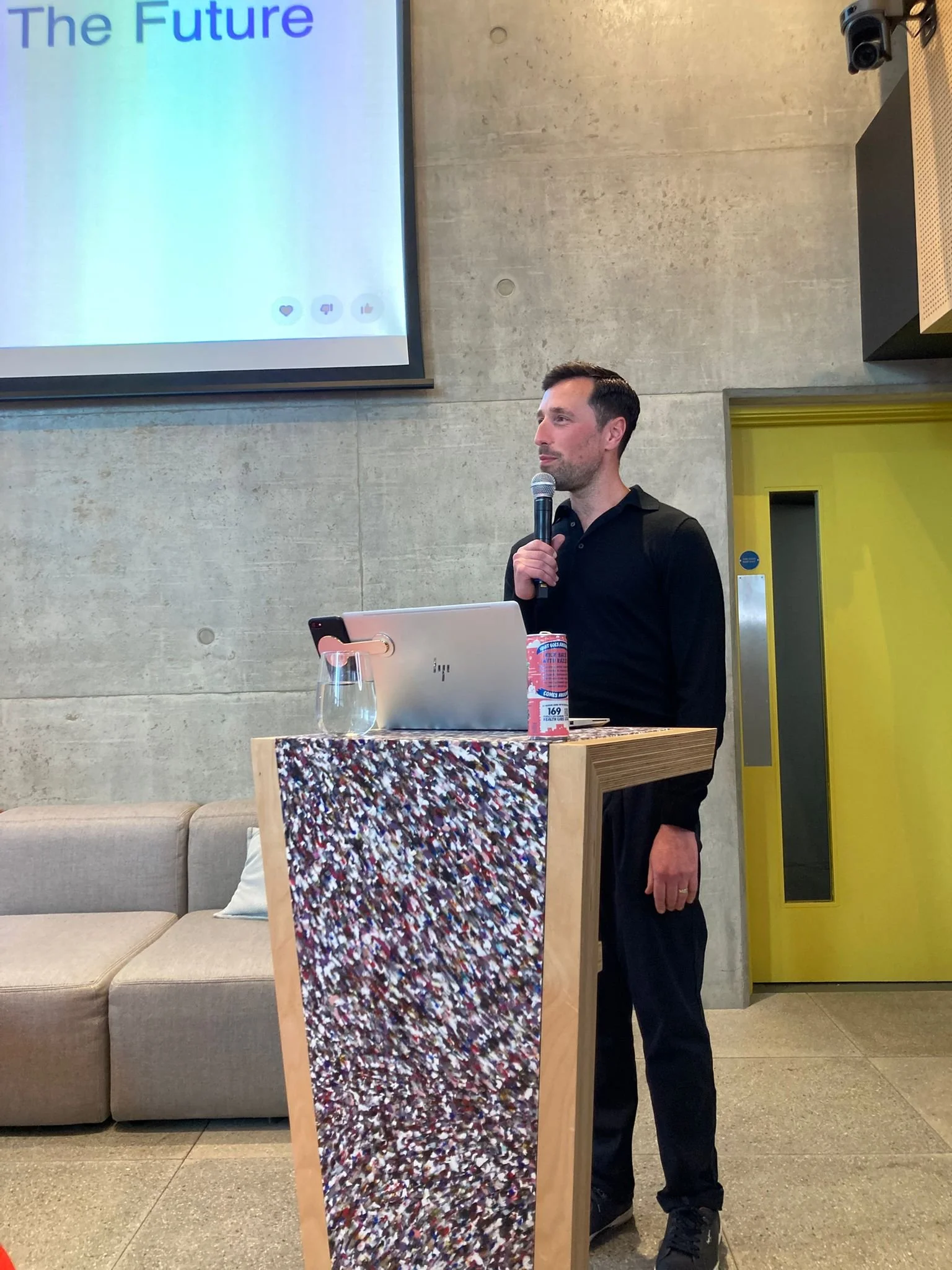Eutopia or Dystopia?
AI’s Future Is Ours to Shape
At Brighton AI’s June event we welcomed legal and tech advisor Matt Holman from Cripps LLP to lead an engaging session exploring the big question: are we heading towards a dystopian future powered by AI, or can we build a Eutopia?
This wasn’t a talk in the traditional sense. Matt opened with some provocations, shared data and forecasts, and invited the audience to debate. The format was informal, open-ended, and at times, challenging - a reminder that there are no easy answers when it comes to AI’s impact on society.
What Do We Mean by Eutopia?
The word Eutopia (often misread as “Utopia”) comes from the Greek for “good place”. Unlike a utopia - an idealised but imagined world - Eutopia is a better, plausible future.
The framing of the evening was intentional: AI’s outcomes aren’t fixed. They’ll depend on the choices we make now, as individuals, organisations, and governments.
AI and the Future of Work: Displacement, Augmentation or Both?
A major focus of the session was the impact of generative AI on employment. Matt drew on 2024 research from the Institute for Public Policy Research (IPPR) - the first UK-specific study of how AI might affect jobs and productivity.
The report sets out three possible scenarios:
Augmentation Empathy – AI supports people to do their jobs better, boosting UK GDP by 13.4% (roughly £305bn).
Augmentation with Displacement – AI takes over some tasks while helping with others, leading to 4 million jobs lost and GDP growth closer to 6.3% (£1.44bn).
Displacement Only – Widespread automation, minimal economic benefit, and up to 8 million jobs displaced.
While the audience leaned towards the middle scenario, Matt leaned more pessimistic. He argued that all jobs can eventually be automated - not necessarily in the short term, but within a decade, he expects the world of work to look unrecognisable. He pointed to the pace of AI progress, with capability doubling every six months, as a key signal that we may not have as much time as we think.
There was also historical context. Matt referenced that 64% of jobs in the 2000s didn’t exist in the 1940s, highlighting the potential for new job creation - though how, when and for whom remains uncertain.
AI and Sustainability: A Mixed Picture
The second theme of the evening was AI’s environmental impact.
Matt acknowledged the considerable energy, water and mineral resources required to build and operate large AI models. But he also noted that AI could accelerate sustainability in other areas. For instance:
Efficiency gains in AI hardware are reducing power consumption
The sector is spurring investment in renewable infrastructure
AI applications in logistics (e.g. route optimisation) are already helping cut carbon emissions and food waste
Still, the high upfront cost of AI infrastructure limits adoption to a handful of global tech firms. Making sustainable AI accessible to a wider range of businesses and organisations will require more than innovation - it’ll take policy, investment and public engagement.
Steering the Future
Matt closed by reinforcing a key point: we’re not passive observers in all this. The path towards either Eutopia or Dystopia depends on how we respond today.
There’s no single solution - but better choices, wider participation, and greater understanding of the implications of AI all matter.
Further Reading
IPPR Report: Employment and Productivity Scenarios (March 2024)
This landmark report explores three futures for AI in the UK labour market.
Watch the event on YouTube


